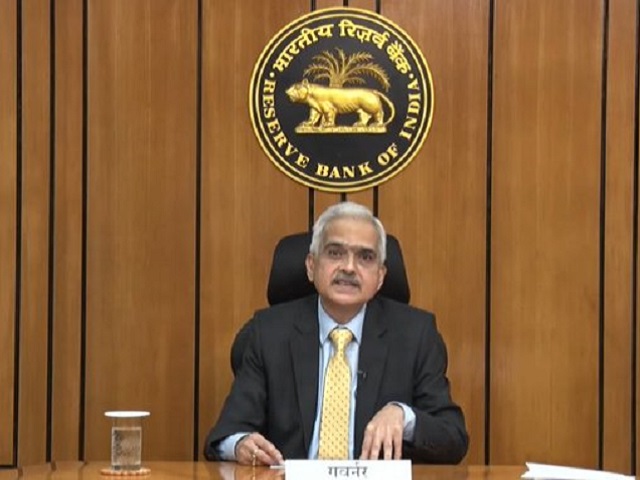[ad_1]

The Reserve Bank of India (RBI) in a sudden move on May 4, 2022 increased the policy repo rate by 40 basis points to 4.40 percent with immediate effect.
RBI Governor Shaktikanta Das informed while addressing a press conference that the Monetary Policy Committee (MPC) had decided to hold an off-cycle meeting on May 2nd and 4th to reassess the evolving inflation-growth dynamics and the impact of the developments after the MPC meeting of April 6-8, 2022.
Based on the assessment of the current macroeconomic situation and the outlook, the MPC voted unanimously to increase the policy repo rate by 40 basis points to 4.40 percent, with immediate effect. This is the first increase in the policy repo rate by RBI since May 2020.
Read: RBI Monetary Policy Highlights: Repo rates remain unchanged at 4%, GDP growth projected at 7.2% for FY 23
What is Repo Rate?Repo rate means the interest rate at which the RBI lends short-term funds to banks. |
Repo Rate Hike Impact
The standing deposit facility (SDF) rate stands adjusted to 4.15 percent and marginal standing facility (MSF) rate and the Bank Rate to 4.65 percent.
The MPC also decided to remain accommodative while focusing on withdrawal of accommodation to ensure that inflation remains within the target while supporting growth.
Why has RBI hiked repo rate?
- RBI Governor rationalised the MPC’s decision to hike the policy repo rate by highlighting the current global scenario, wherein there has been a sharp rise in inflation due to current geopolitical tensions. Inflation has risen to its highest level in the last 3-4 decades in major economies with global crude oil prices remaining volatile and above USD 100 per barrel.
- The global food prices also touched a new record in March and have been up even further since then.
- There is also a shortage of products relevant to India such as edible oils that are inflation-sensitive due to the conflict in Europe and export bans by key producers.
- There has also been a spike in fertiliser prices and other input costs, which has a direct impact on food prices in India.
- The COVID-19 and lockdowns in major global production hubs are likely to further increase the bottlenecks in the global supply chain while suppressing growth. The global growth projections have been revised downwards by up to 100 basis points for this calendar year.
- All of these dynamics pose upside risks to India’s inflation trajectory, which were set out in the MPC resolution of April 2022 informed RBI Governor Shaktikanta Das.
Watch RBI Governor’s Full Address Below
Statement by Shri Shaktikanta Das, RBI Governor https://t.co/cktaninqLF
— ReserveBankOfIndia (@RBI)
May 4, 2022
RBI hikes CRR
The Reserve Bank of India also increased the cash reserve ratio of banks by 50 basis points to 4.5 percent of net demand and time liabilities (NDTL). This decision will come into effect from May 21, 2022. The increase in CRR is in line with RBI’s stance of withdrawal of accommodation and its earlier announcement of gradual withdrawal of liquidity over a multi-year time frame.
Global Economy Assessment
The International Monetary Fund (IMF) has revised the global output growth for 2022 downward by 0.8 percentage points to 3.6 percent amid disruptions, shortages and rising inflation due to the current geopolitical tensions and sanctions. The World Trade Organization has also scaled down its world trade growth projection for FY 2022 by 1.7 percentage points to 3.0 percent.
Domestic Economy Assessment
RBI noted that the domestic economic activity had stabilised between March-April with the easing of restrictions after fall in COVID-19 infection cases following the third wave.
While the urban demand maintained expansion, rural demand still showed some weakness, however, the investment activity had begun gaining traction with record double-digit expansion in merchandise exports for the 14th consecutive month in April and a robust increase in the non-oil, non-gold imports.
However, there was a sharp increase in headline CPI inflation in March 2022 to 7 percent, which was particularly propelled by food inflation due to the impact of adverse spillovers from unprecedented high global food prices.
There was also a direct impact of the increase in domestic pump prices of petroleum products, beginning from the second fortnight of March, which intensified in April, feeding into core inflation prints.
The overall system liquidity though remained in large surplus with bank credit rising year-on-year by 11.1 percent as of April 22, 2022.
India’s foreign exchange reserves also declined by USD 6.9 billion in 2022-23 as of April 22 to USD 600.4 billion.
Read Also: India’s Agriculture exports touch milestone of $50 bn in FY22
[ad_2]
Source link
